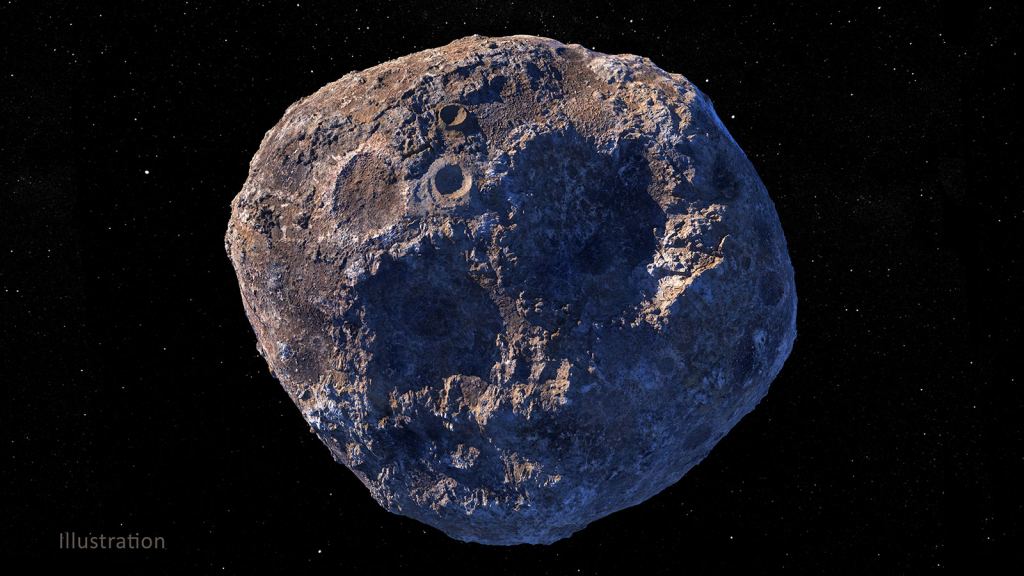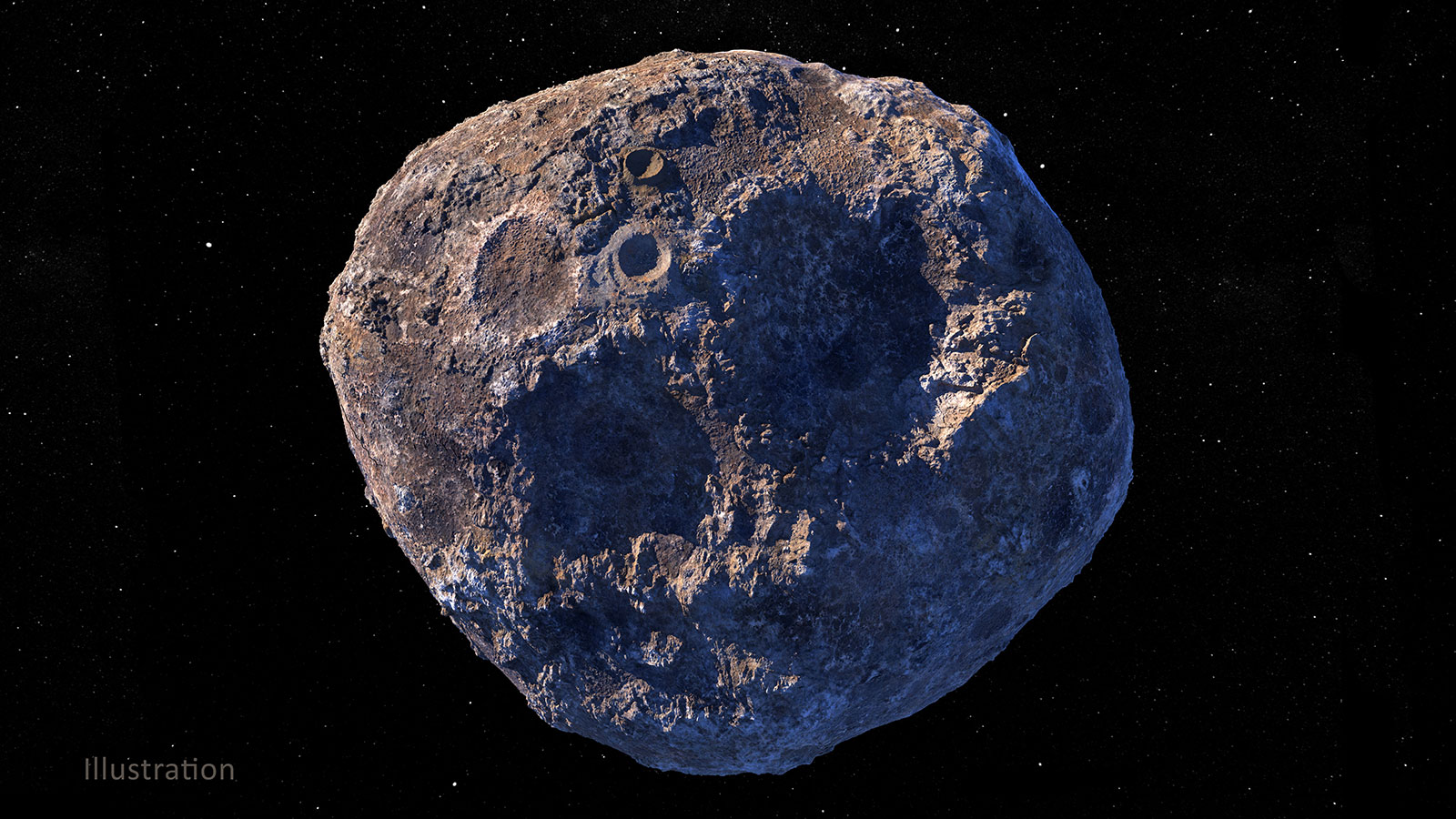Asteroid 16 Psyche, often sensationally dubbed the 10,000 quadrillion dollar asteroid due to its composition of valuable metals, may not be entirely what it seems. A new paper out of the University of Arizona suggests that the asteroid is possibly more porous, and less metallic, than previous studies indicated. It still certainly has a mostly metallic structure, but its composition is more complex – and that’s good news. Given the impracticality of space mining (in the near future anyway) 16 Psyche’s real value is scientific: planetary scientists think it is probably the exposed core of a protoplanet from the early days of the Solar System. Studying such an object up close would be enormously useful for understanding planet formation, and this paper is the latest attempt to understand its structure.
The researchers based their work on previous observational data that showed the asteroid was mainly a mix of three ingredients: metal, low-iron pyroxene, and carbonaceous chondrite. In the laboratory, they then tried to recreate the visible and near-infrared spectra seen by the telescopic observations, using various mixtures of the three ingredients. This allowed them to determine with a higher degree of accuracy the percentages of each ingredient that make up 16 Psyche’s surface. The result was 82.5% metal (previously estimated at a staggering 94%), 7% low-iron pyroxene, and 10.5% carbonaceous chondrite. They were also able to determine that the asteroid’s density must be quite low, with a porosity around 35%.

As lead Author David Cantillo explains, “That drop in metallic content and bulk density is interesting because it shows that 16 Psyche is more modified than previously thought…Having a lower metallic content than once thought means that the asteroid could have been exposed to collisions with asteroids containing the more common carbonaceous chondrites, which deposited a surface layer that we are observing.”
Low density is common in smaller asteroids. NASA’s OSIRIS-REx mission to asteroid Bennu discovered that the building-sized object was more like a rubble pile than a single chunk of rock, with a porosity higher than 50%. But for larger objects like Psyche (which is the sixteenth-largest asteroid in the Solar System by diameter and the ninth-largest by mass – about the size of Massachusetts), such a low density was a surprise. If 16 Psyche really is an ancient planetary core, it doesn’t appear like we expect it should.

There’s only one way to find out what’s going on there, of course, and that’s to go visit it. NASA has been planning a robotic orbiter to visit 16 Psyche for years now, and the launch date is getting closer. Originally planned to arrive at the asteroid in 2030, the schedule was moved up to take advantage of a more direct orbital trajectory, and the spacecraft will now launch in 2022 and arrive in 2026. What it finds when it gets there is anyone’s guess, but Cantillo’s research has given us a better estimate of what to expect, and fuels excitement for more surprises to come.
Learn More:
Mikayla Mace Kelley, “Asteroid 16 Psyche Might Not Be What Scientists Expected.” University of Arizona.
David C. Cantillo et al., “Constraining the Regolith Composition of Asteroid (16) Psyche via Laboratory Visible Near-infrared Spectroscopy.” The Planetary Science Journal


If it rubble instead of solid, that make it easier to mine. I keep hoping for uranium and thorium to move the entire fission fuel cycle to serve us in space.